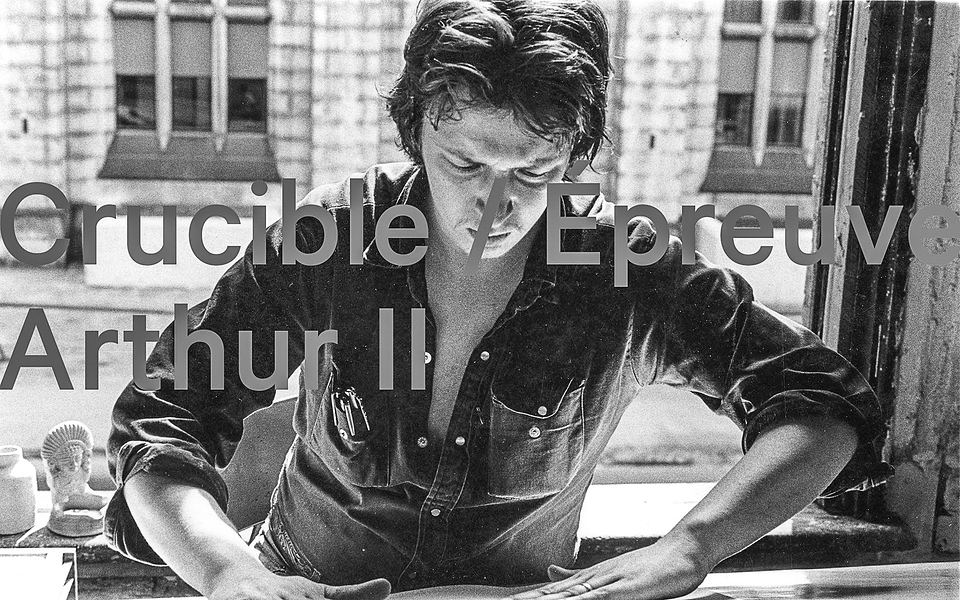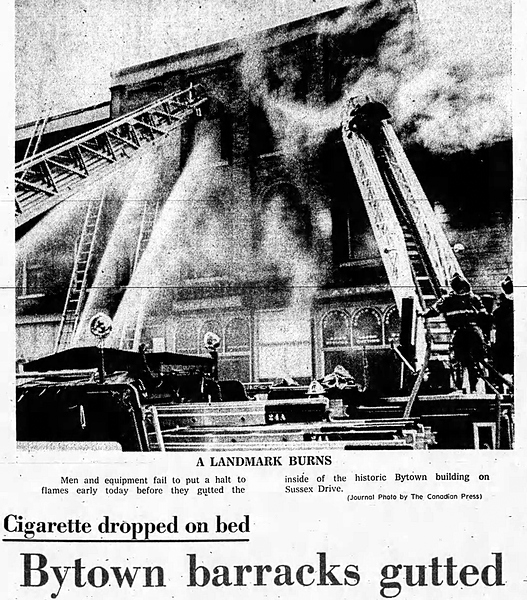Arthur II’s new paintings tell the tale
Robert Smythe
On February 23, veteran artist and Centretown resident Arthur II inaugurated SAW Gallery’s new project display space at Arts Court with a solo exhibition entitled Crucible.
This show explains the source of SAW’s curious name, which is an acronym for a longer title that is revealed as the installation’s narrative unfolds.
In March 1973, Arthur II was awoken by a raging fire in his shared studio space on the third floor of 537 Sussex Drive, and barely escaped the blaze by running through a burning door. The fire had been started by a lit cigarette falling on a mattress.
The historic building, which the Ottawa dailies termed the Bytown Barracks, was part of the NCC’s burgeoning Mile of History project. Arthur’s studio was being rented from them for $45 a week.
Interestingly enough, some months later the same building burned to the ground in a subsequent fire while the NCC was proceeding with restoration. What you see at this address today is a facsimile of the original structure.
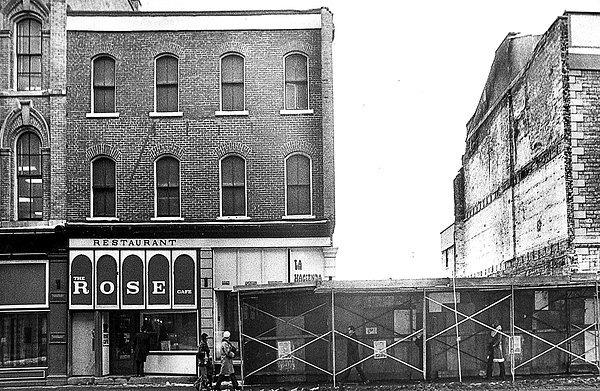
Arthur II’s Crucible is a new series of 12 large paintings looking back at a haunting and surreal moment that catalyzed the creation of SAW, one of Canada’s first artist-run centres.
Buck-naked, the artist was able to rip off the cushion of a lobby chair, turning it into a big diaper to greet the firefighters who quickly arrived to extinguish the flames.
The events of that terrifying, chaotic evening included some time in police custody while the authorities ascertained that he wasn’t the arsonist, being given a police uniform jacket to cover him up as he told his story, and being handed a two dollar bill by a sympathetic cop who told him to go buy a pack of cigarettes.
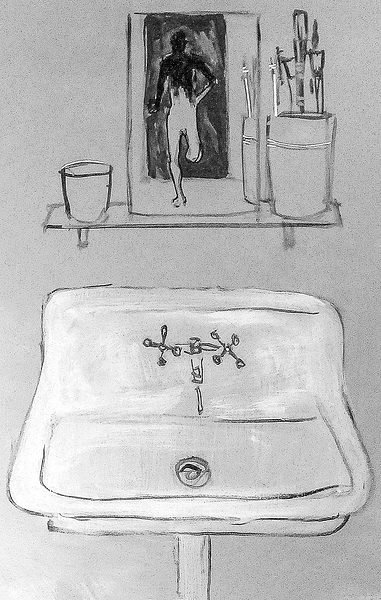
So was launched SAW’s origin story, as Arthur II and his studio mates Alyx Jones, John Garner, Brenda Lamb, and Peter Lamb scrambled to find a new space to work.
Soon after, Le Hibou Coffee House owner Pierre-Paul Lafrenière came to the rescue by offering the artists the second floor of his legendary establishment (which was just two doors down the street) to run a gallery, printmaking shop, and painting studio.
It was named Sussex Annex Works, S… A… W… get it? The space became the organization we know today. To celebrate its 50th anniversary in 2023, SAW Gallery commissioned Arthur II to produce fresh work for this exhibition.
The paintings’ large-scale format is unusual for this artist, although he has worked as a scene painter for the National Arts Centre and the Stratford Festival.
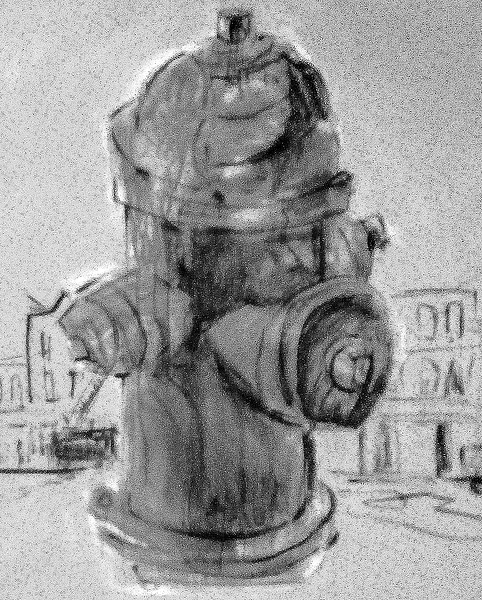
His dozen chapters are explained in softly focused grisaille (all grey tones), occasionally highlighted with some vivid red as the more exciting details of his tale demand. They recount all of the stages of his big adventure – some in a swirling dream state, others in a more matter-of-fact documentary style.
SAW’s new exhibition space, rather like an annex itself to their principal gallery, has been painted deep charcoal black – a setting to heighten the drama of this story.
It’s a homecoming for Arthur because he had many shows at SAW in its earliest decades. He’s also known for work at folk festivals, numerous posters for the likes of John Prine, Bruce Cockburn, and Valdy, and album covers for Willie P. Bennett, David Wiffen, and Sneezy Waters.
Being chosen to celebrate SAW Gallery’s half-century is a capstone to a long and varied career. The show runs until April 6. Gallery hours: Tuesday to Saturday, 11 a.m. to 6 p.m.

